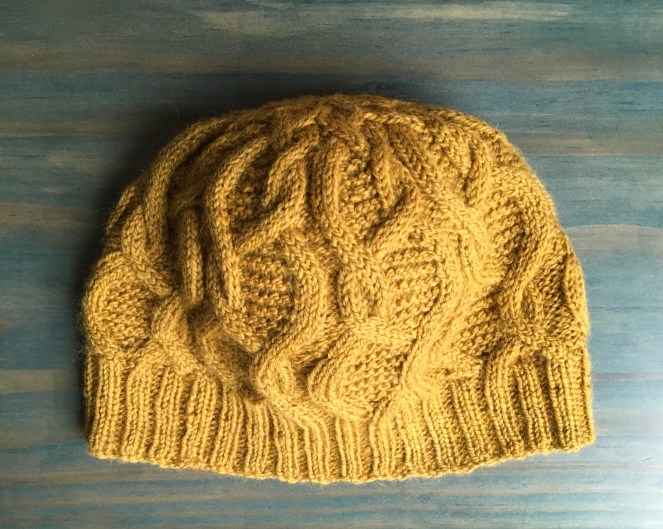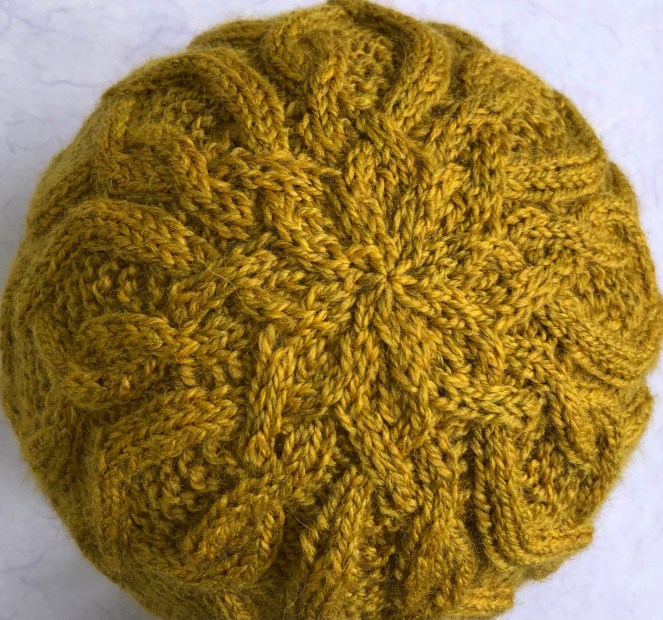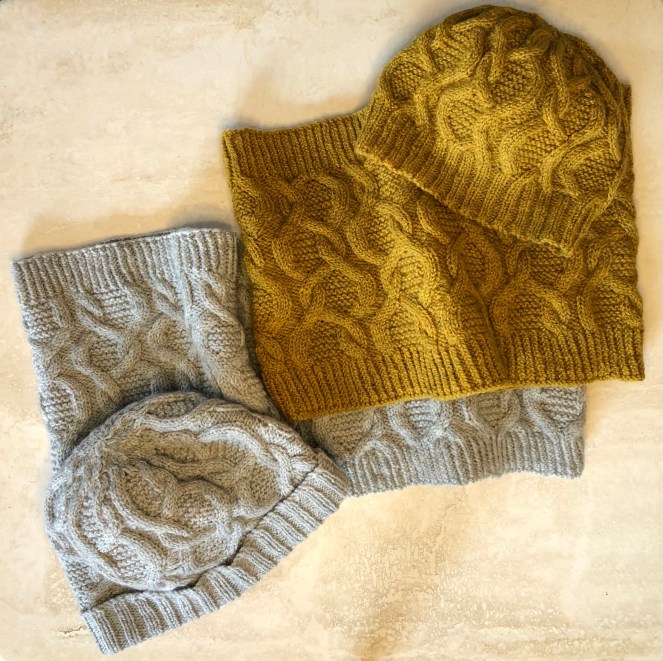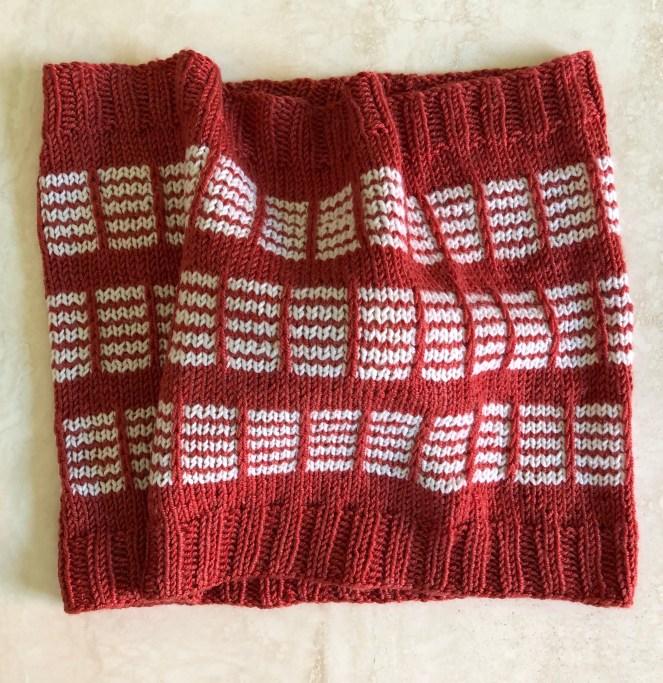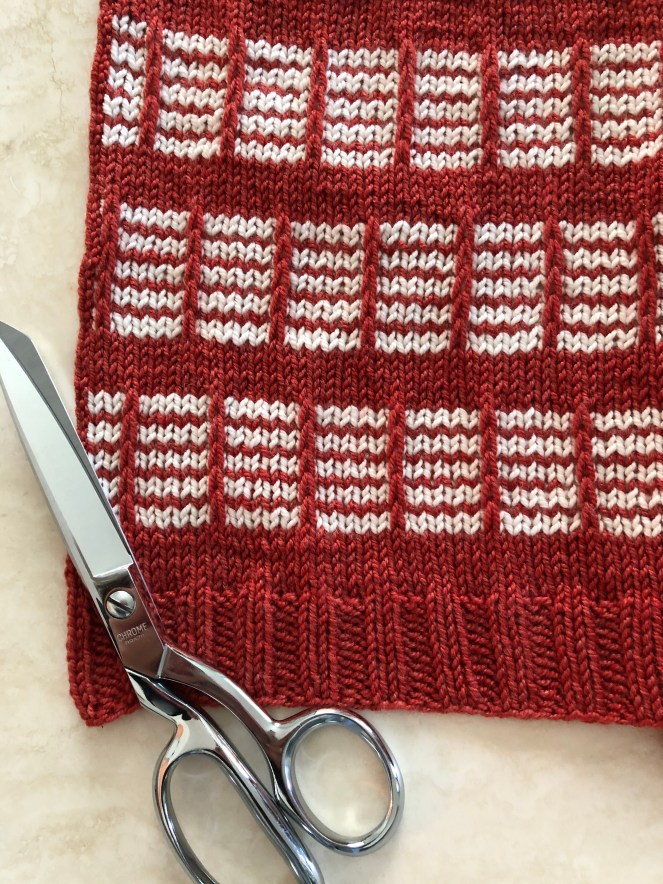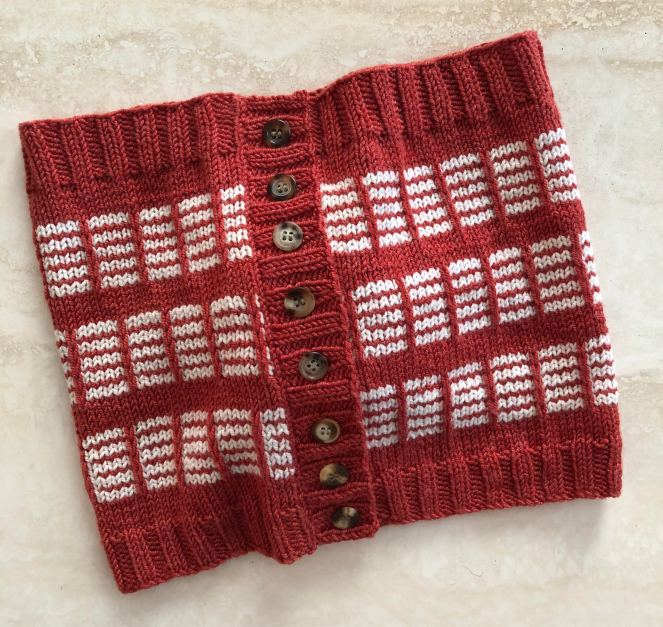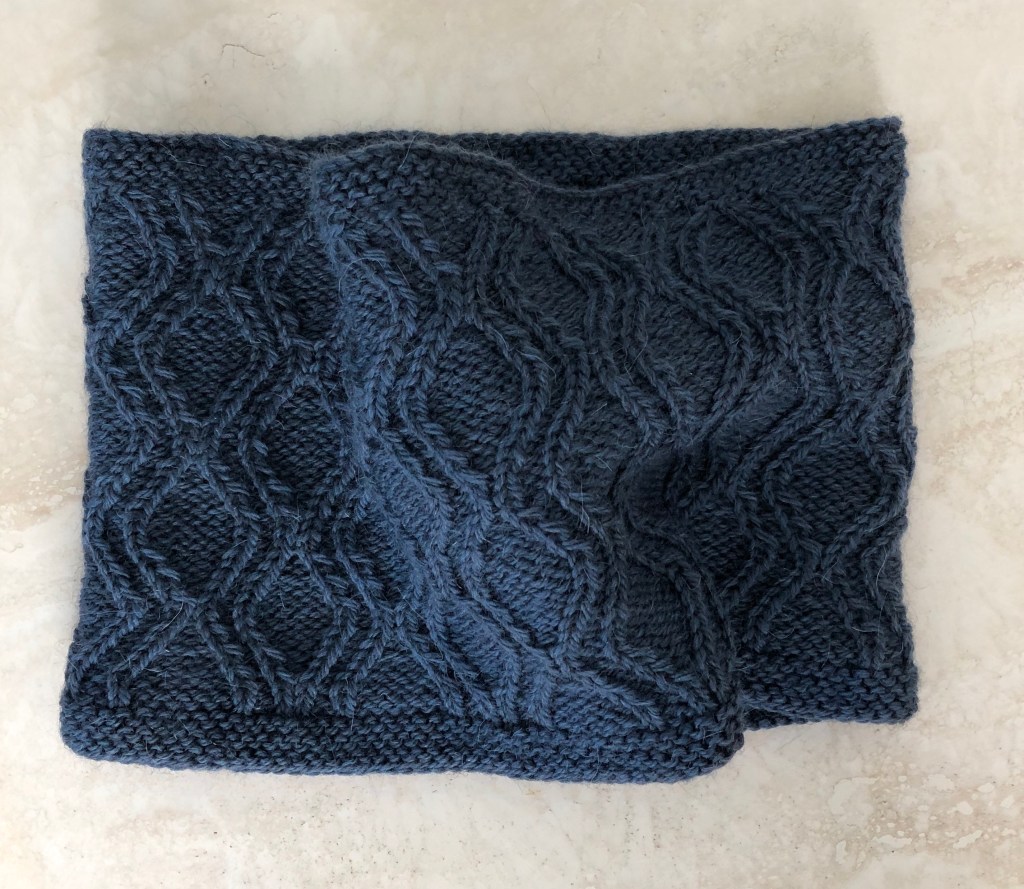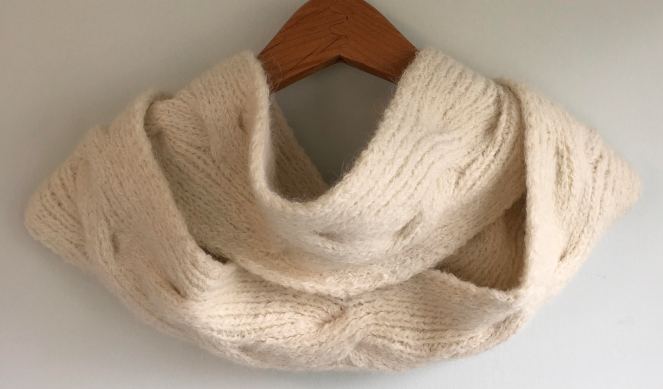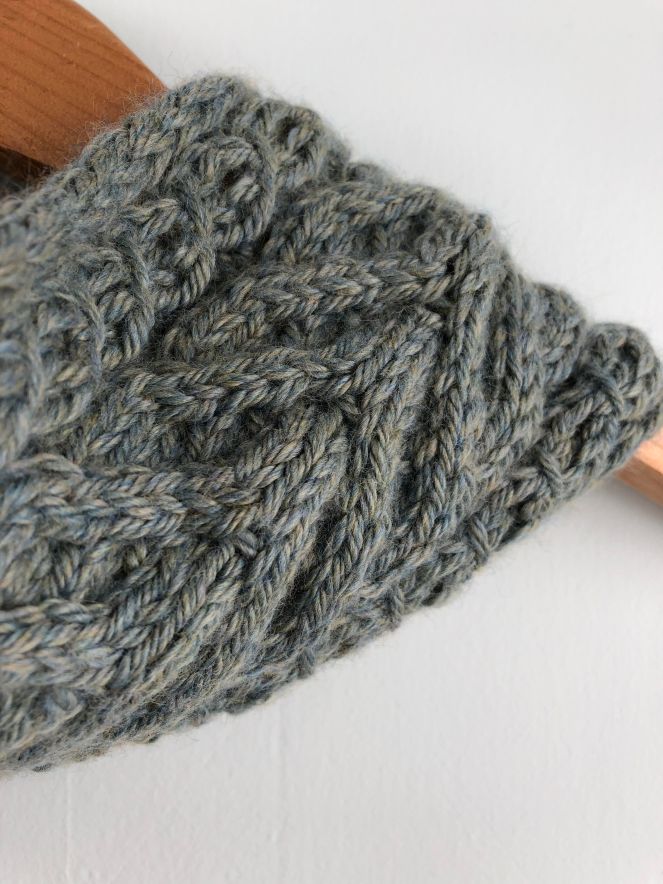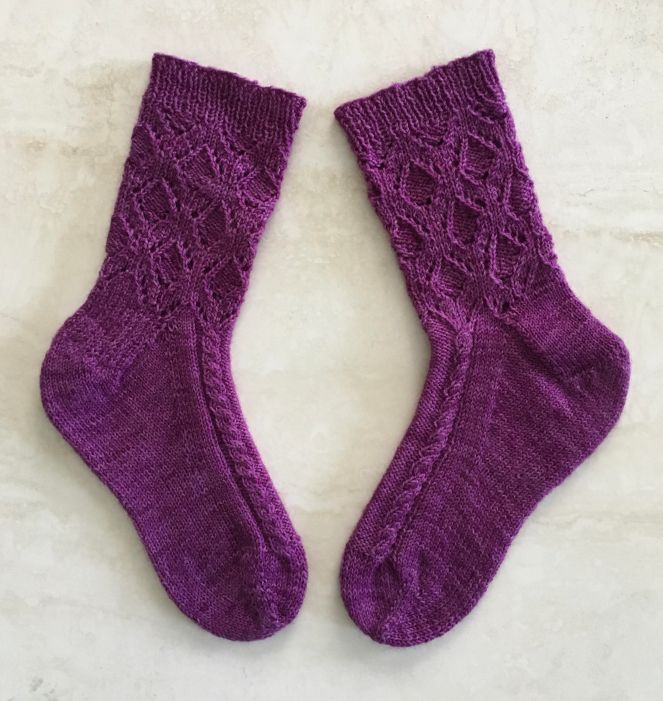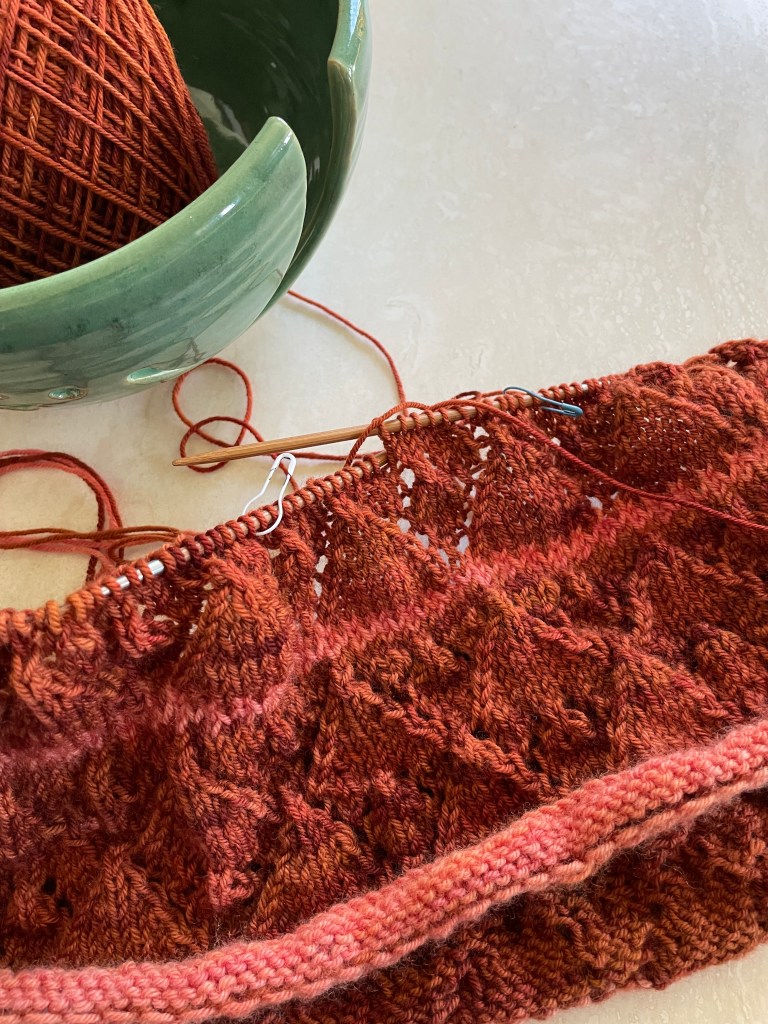

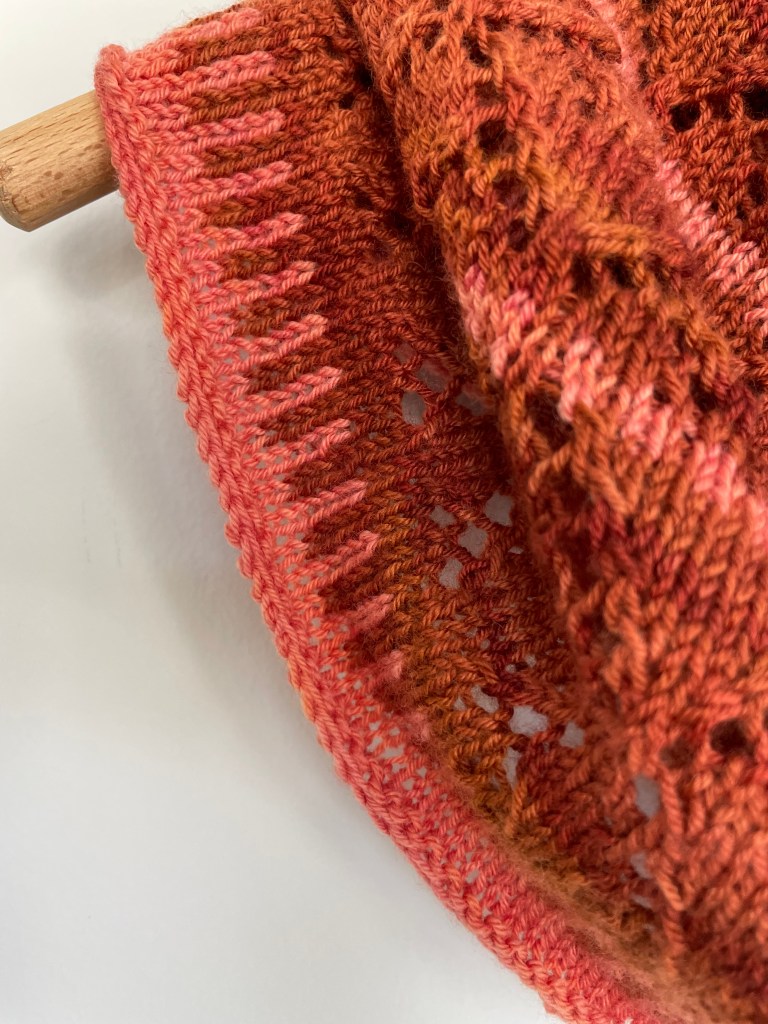
With seven cowls tucked away in tissue paper with protective lavender sachets, I recognize I should pause from knitting any more of these wardrobe accessories. This particular article of clothing is a favorite among pattern designers. As proof, I need only refer to the last three collections of new patterns that I’ve bought. Within the knitting universe, cowls provide a quick project that often enables the knitter to explore a new or challenging technique on a small scale with the added benefit of putting into service a beautiful, but solo skein of yarn. I am less certain of their popularity among those seeking soft, squishy neckwear.
My latest finished object features a two-tone, double-diamond lace pattern. Rather than relying on bold contrasts, the color shifts are subtle. The pattern specifically called for “analogous colors – or colors that fall next to each other on the color wheel.” The Double Diamond Cowl is part of Marie Greene’s recently released D is for Diamonds Stashbuster Series. Fully embracing the spirit of the project, this fingering weight yarn came from my stash of lovely hand-dyed fibers acquired while participating in Heather Best’s Hand Dyed Happy Yarn Club.
Happy knitting!

